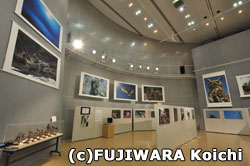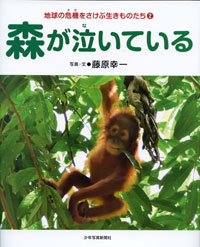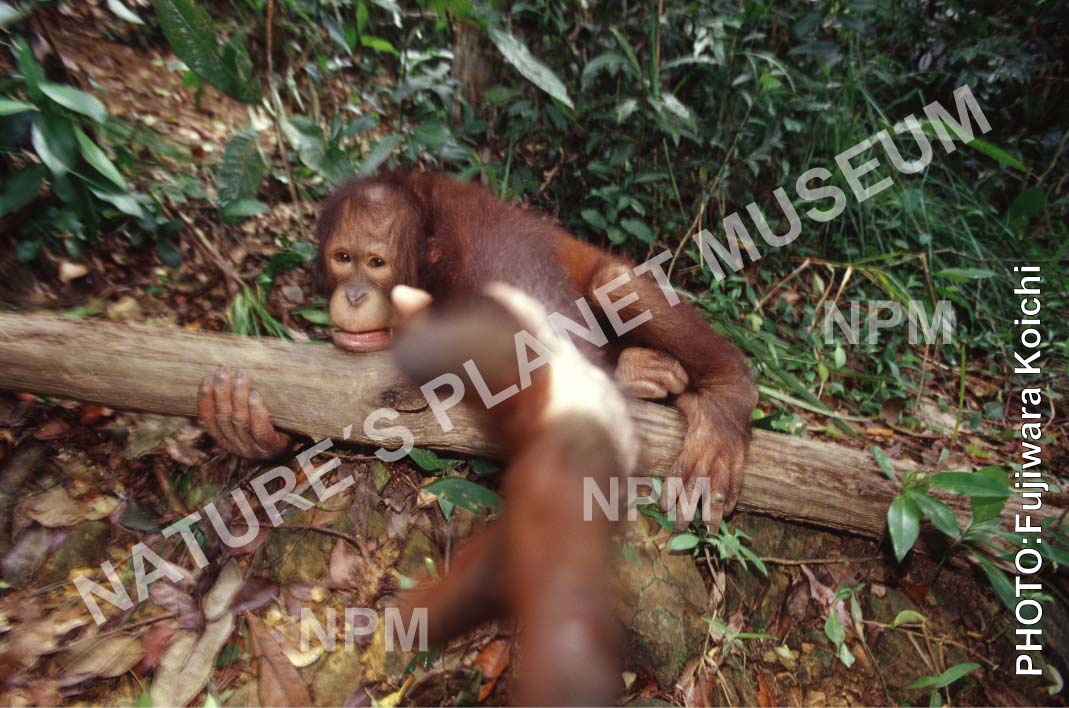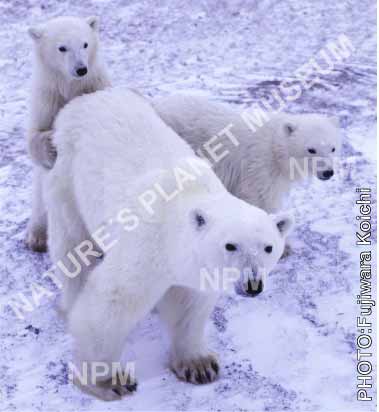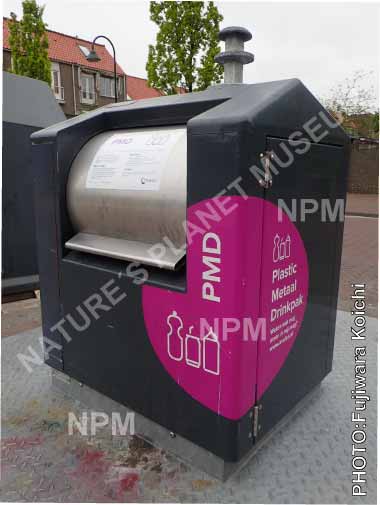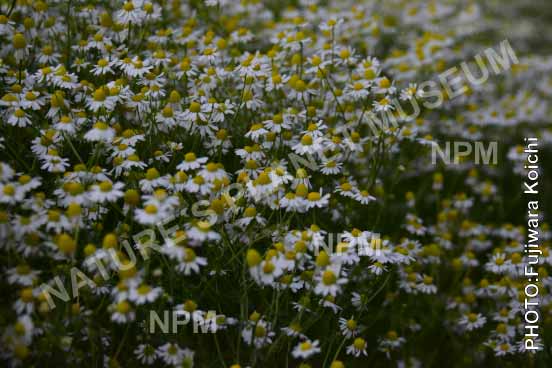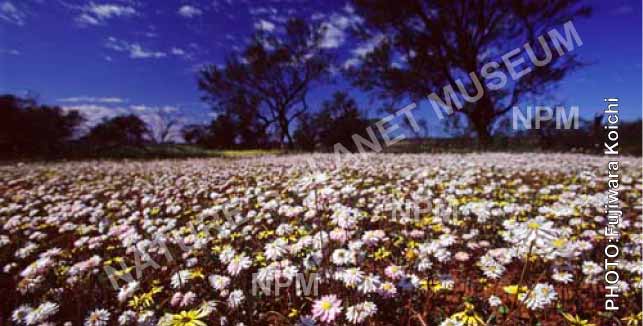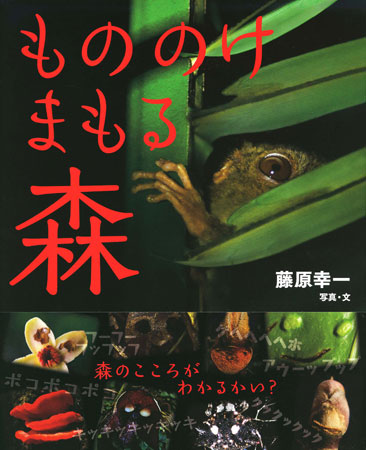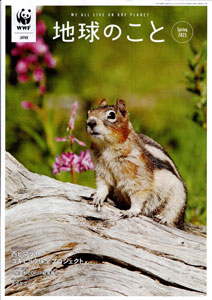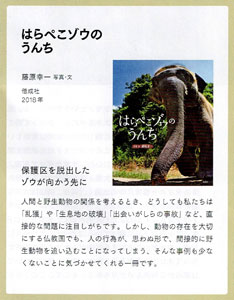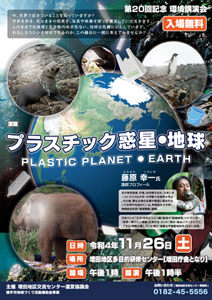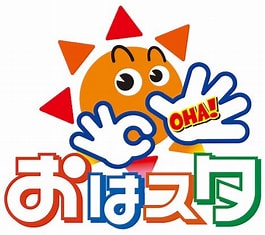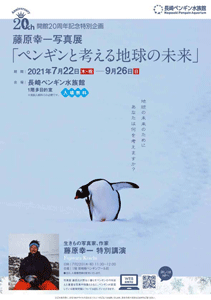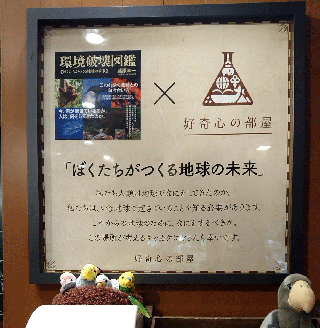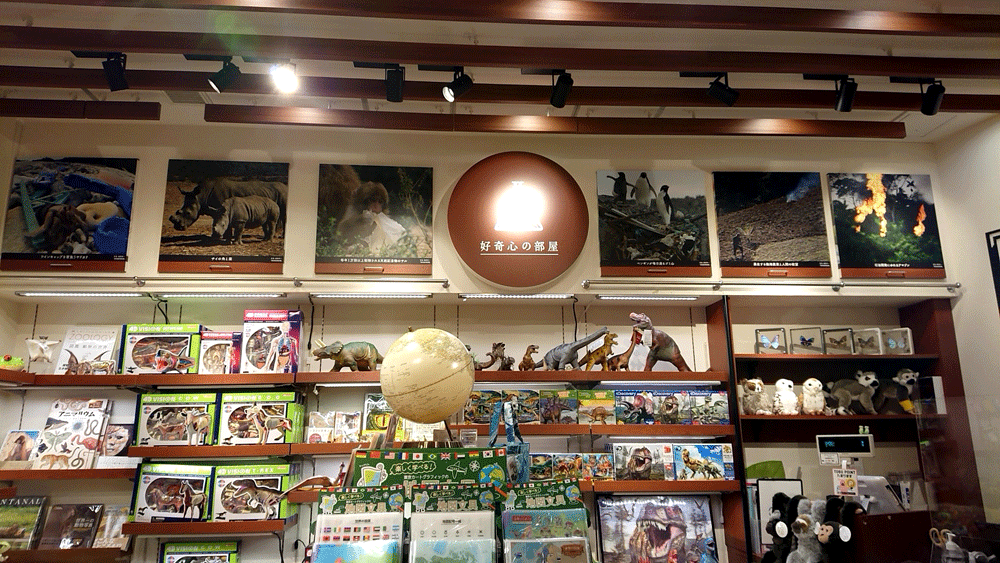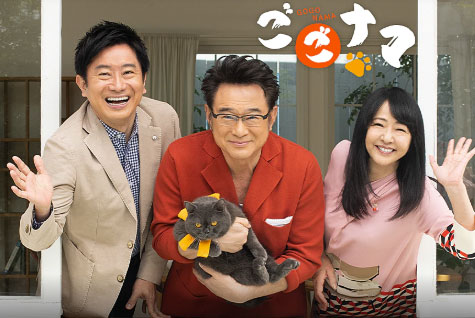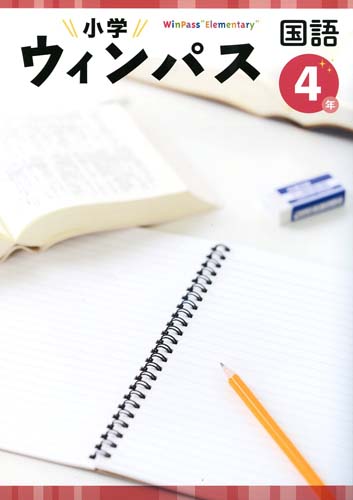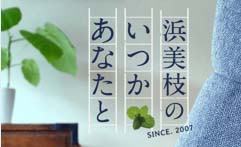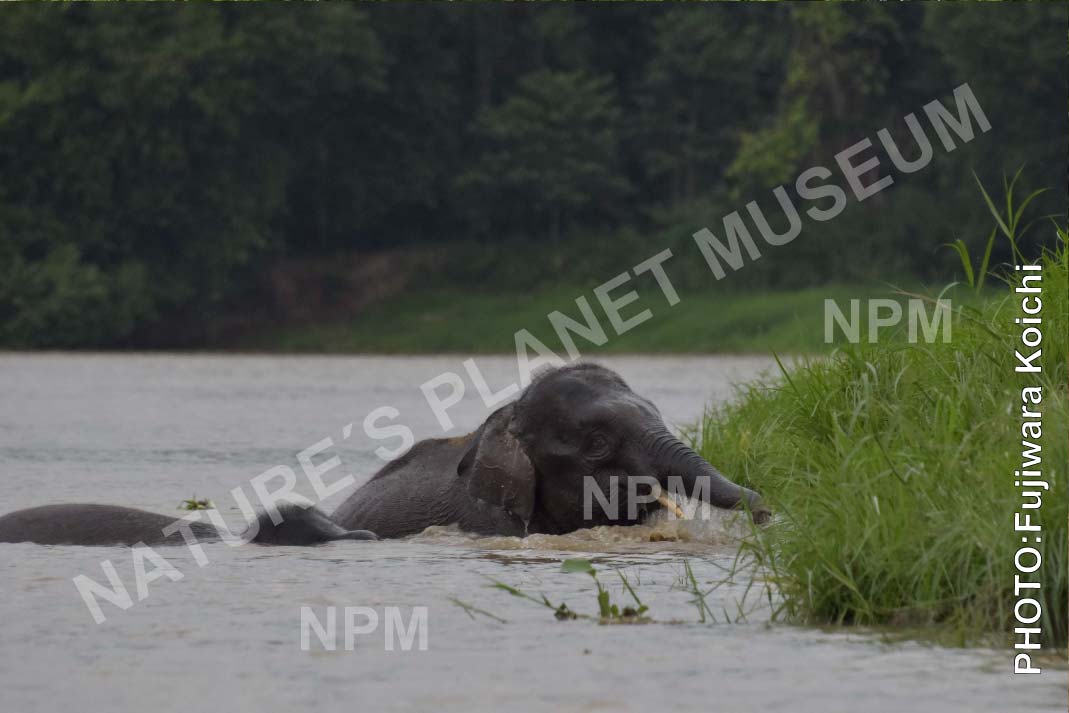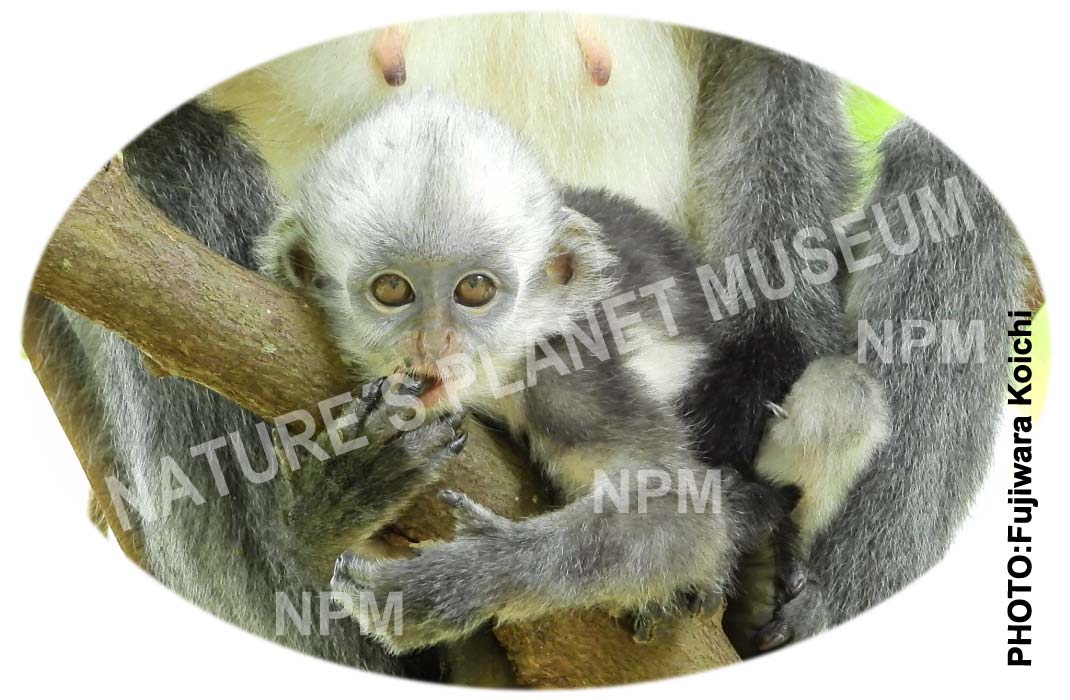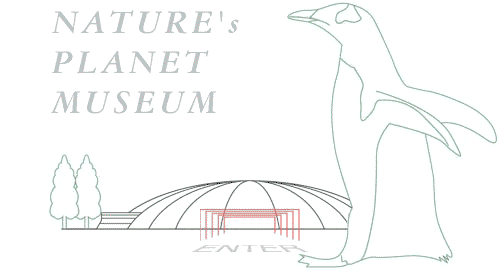|
Special Edition: PLASTIC POLLUTION IN THE WORLD
���E�̃v���X�`�b�N����
|
PLASTIC PLANET��EARTH
photo and text by Fujiwara Koichi
�w�v���X�`�b�N�f���E�n���x
�ʐ^�ƕ��F�����K��
ISBN978-4-591-16285-9
publisher: POPLAR PUBLISHING Co.,LTD.
������� �|�v����
|
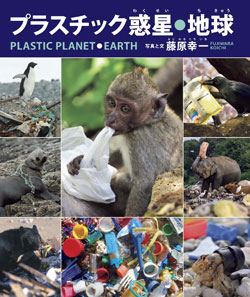
book size�@22cm�~26.5cm�@72pages |
Published on 24 May 2019
|
|
|
There are huge amounts of plastic waste in the natural environment where
wild monkeys thrive on. The photographs taken by Fujiwara Koichi
strongly appeal for the intense discomfort and misery. What can we
do now for the Earth, for mother nature and for ourselves?
�쐶�U��������Ȃ����R�̉c�݂̒��ɁA��ʂ̃v���X�`�b�N���݁B
���̋���ȕs�����ƔߎS�����A�����K��̎ʐ^�������i�������Ă��܂��B
�����������܁A�n���̂��߁A��Ȃ鎩�R�̂��߁A�����Ď��������̂��߂ɂł��邱�ƂƂ͉��Ȃ̂ł��傤���E�E�E
|
|
| Photo Gallery�@�ʐ^�M�������[ |
FOREST�@�X
Please click this photo to start
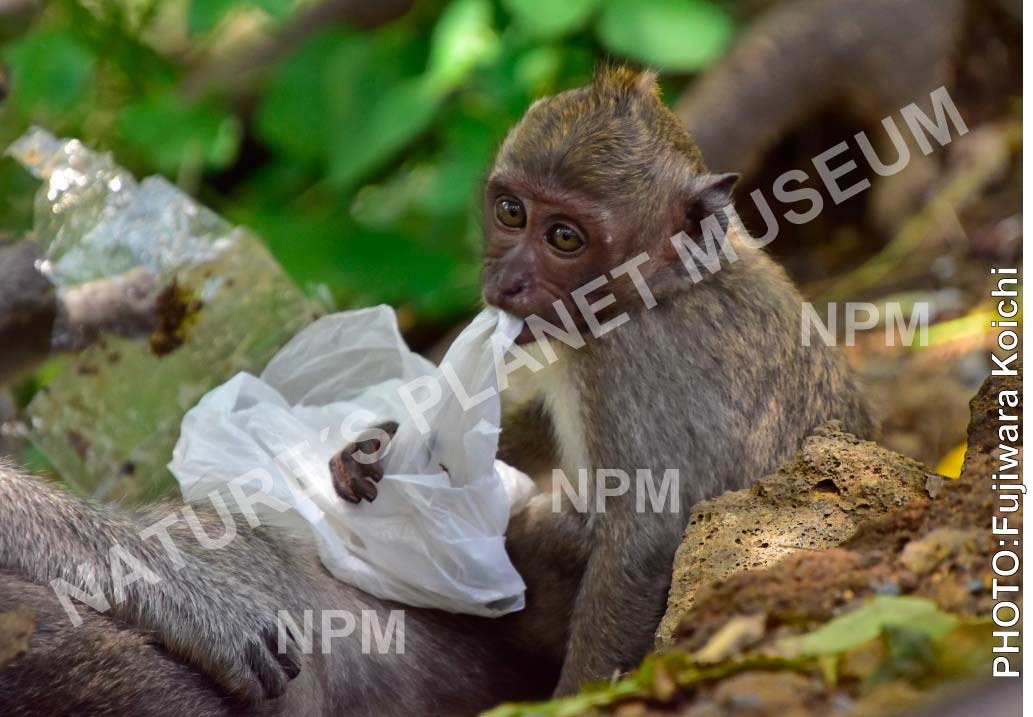
�M�������[���ς�ɂ͎ʐ^���N���b�N
|
OCEAN�@�C
Please click this photo to start
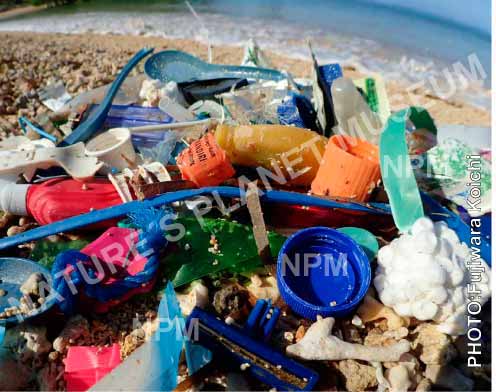
�M�������[���ς�ɂ͎ʐ^���N���b�N |
|
|
Video:PLASTIC WASTE THROUGH INTO THE RIVER
����
�w��Ƀ|�C�̂Ă��ꂽ�v���X�`�b�N�����x
|
Please click photo to start video.
������ς�ɂ͎ʐ^���N���b�N
|
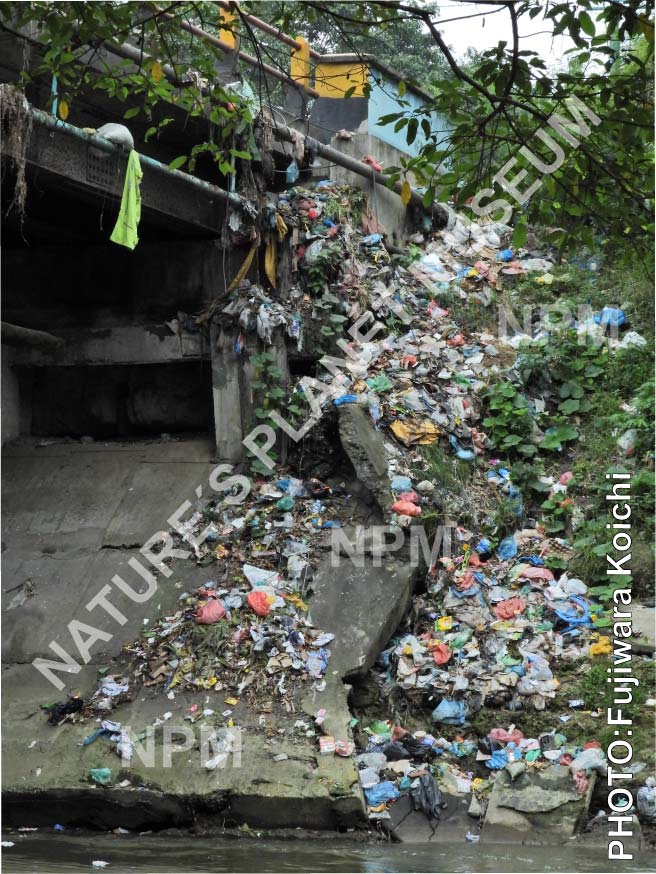 |
|
Large
quantities of plastic waste through into the river. There is no incinerator
here that can safely burn plastic. On top of that, garbage collection hasn�ft
caught up and so people resort to throwing out rubbish into the river.
��ɑ�ʂɃ|�C�̂Ă��ꂽ�v���X�`�b�N���݁B�����ł̓v���X�`�b�N�����S�ɔR�₹��ċp�F������܂���B����ɁA���݂̎��W���ǂ��t�����A��ւ̃|�C�̂Ă����₽�Ȃ��̂ł��B
|
|
|
|
Video: THE MONKEY WAS NIBBLING A PET BOTTLE
����
�w�y�b�g�{�g����������T���x
|
Please click photo to start video.
������ς�ɂ͎ʐ^���N���b�N
|
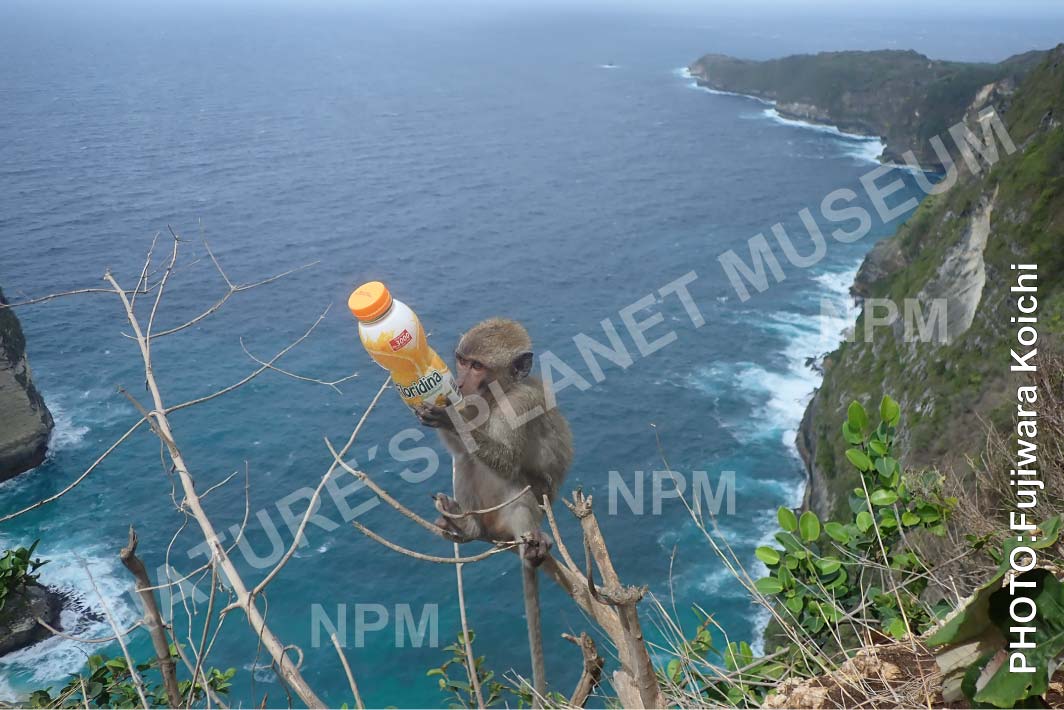 |
|
What a macaque monkey is absorbed is to nibble a pet bottle. When
plastics are made, the chemical additives used can damage the health of
animals and humans.
�쐶�̃J�j�N�C�U���������ɂȂ��Ă������Ă���̂́A�y�b�g�{�g���I�@�v���X�`�b�N�����Ƃ��ɓY������Ă��邢�����̉��w�����ɂ͓Ő�������A���N�ւ̉e�����S�z����܂��B
|
|
|
|
Video: A COMMON WATER MONITOR LIVING IN THE PLASTIC GARBAGE RIVER
����
�w�v���X�`�b�N���݂̐�ɂ��炷�~�Y�I�I�g�J�Q�x
|
Please click photo to start video.
������ς�ɂ͎ʐ^���N���b�N
|
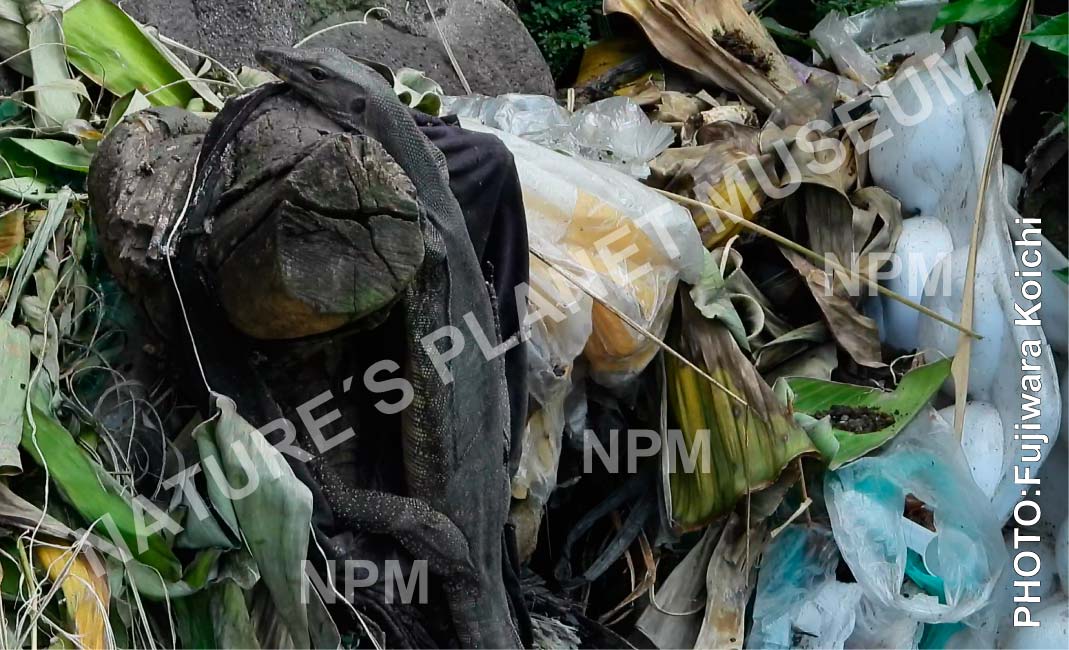 |
|
Plastic pollution is a serious problem in urban rivers in Southeast
Asia. Even in these polluted rivers there was the presence of a common
water monitor desperately living.
����A�W�A�̓s�s���̉͐�ł̓v���X�`�b�N�������[���Ȗ��ɂȂ��Ă��܂��B�����Ȑ�ɂ��K���ɂȂ��Đ�����~�Y�I�I�g�J�Q�̎p������܂����B
|
|
|
|
Video:THE ENDANGERED THOMAS LEAF MONKEY HAS COME TO A PLASTIC DUMP SITE
����
�w�v���X�`�b�N���ݎ̂ď�ɂ���Ă���
��Ŋ뜜��g�}�X�R�m�n�U���x
|
Please click photo to start video.
������ς�ɂ͎ʐ^���N���b�N
|
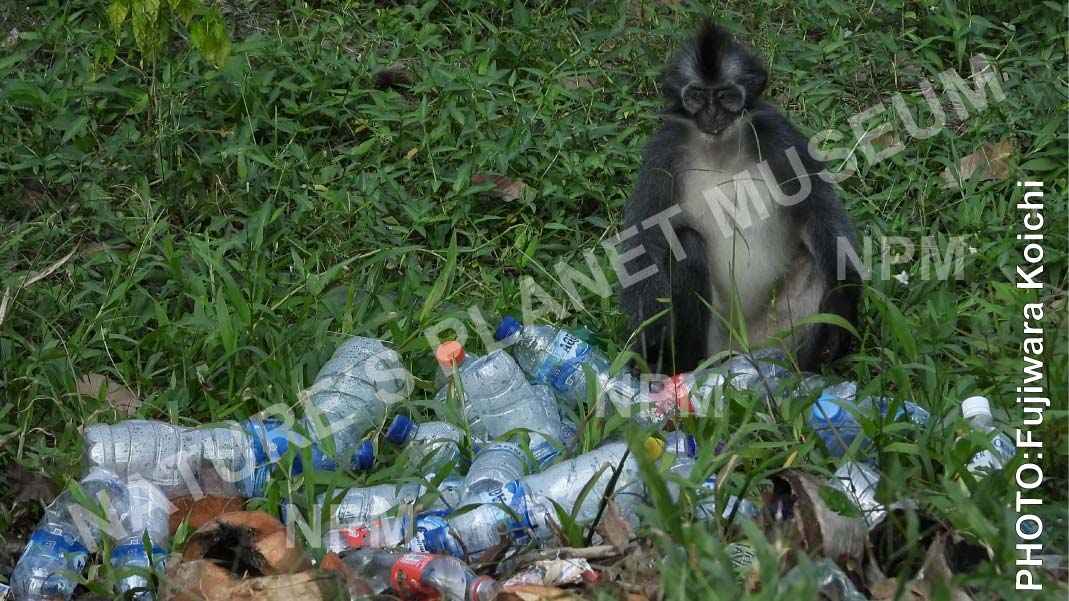 |
|
Many PET bottles and plastic products are thrown away as garbage in the
forest. A Thomas Leaf Monkey has come lured by the smell from the plastic.
�X�ɂ͂�������̃y�b�g�{�g����v���X�`�b�N���i�����݂ƂȂ��Ď̂Ă��Ă��܂��B�v���X�`�b�N�ɕt�����������ɂ��ăg�}�X�R�m�n�U��������Ă��܂����B
|
|
|
|
Video:WILD ORANGUTAN AND A PLASTIC BAG
����
�w�쐶�̃I�����E�[�^���ƃ��W�܁x
|
Please click photo to start video.
������ς�ɂ͎ʐ^���N���b�N
|
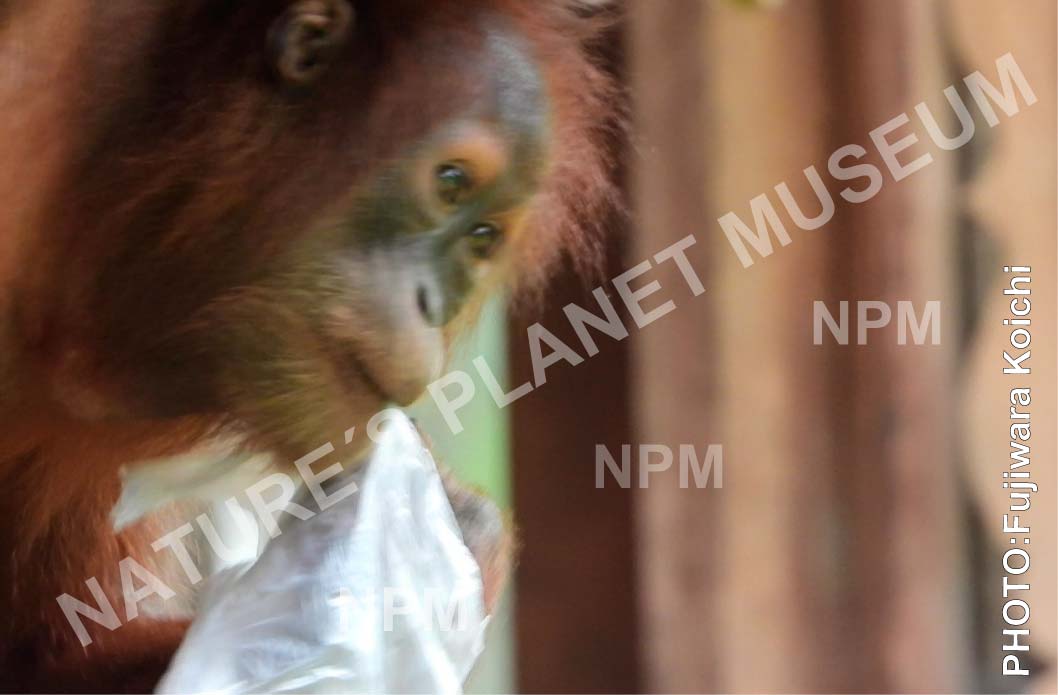 |
An wild orangutan appeared from the jungle. He found a house and was approaching
it. What he was interested is a plastic bag!
�����̖��т���˔@���ꂽ�I�����E�[�^���B���Ƃɋ߂Â��Ă����A����ɂ��������W�܂������܂����E�E�E |
|
|
|
Video:PLASTIC WASTE FILLING UP THE RIVER
����
�w��ߐs�����v���X�`�b�N���݁x
|
Please click photo to start video.
������ς�ɂ͎ʐ^���N���b�N
|
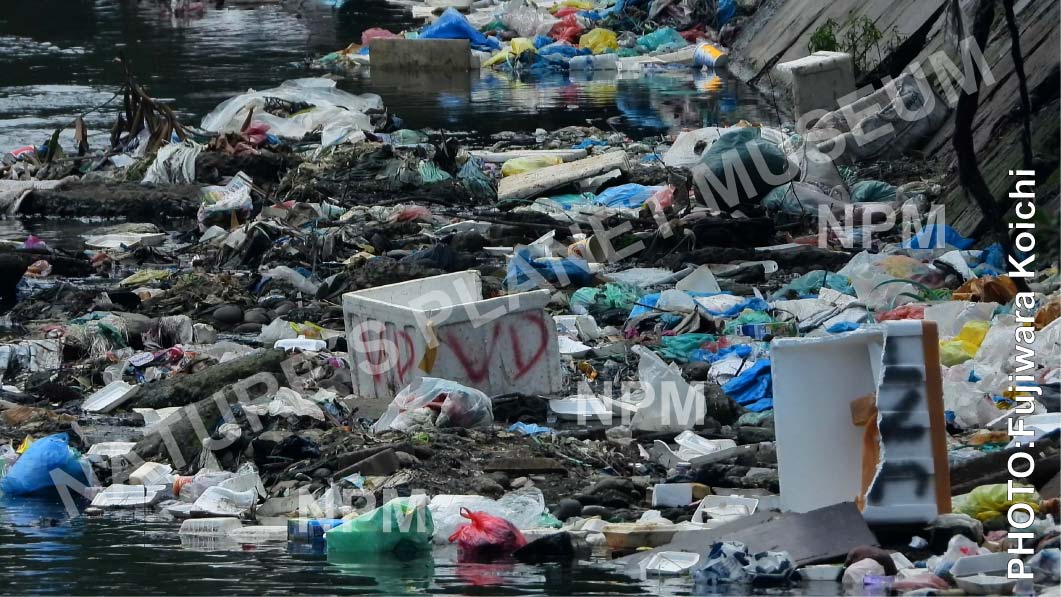 |
|
Humans have been throwing large amounts of plastic trash into the
once clear river. The pollution from the river will soon flow down to the
ocean and contaminate the ocean too.
���Đ�����������ɁA�l�Ԃ̓v���X�`�b�N�Ȃǂ̂��݂��ʂɎ̂ĂĂ��܂��B��̉����͂₪�āA�C�ɗ���Ă����ĊC�m�����̌����ƂȂ��Ă����̂ł��B
|
|
|
|
Video: PLASTIC FLOATING IN THE SEA OF THE WORLD
����
�w���E�̊C��Y���v���X�`�b�N�x
|
Please click photo to start video.
������ς�ɂ͎ʐ^���N���b�N
|
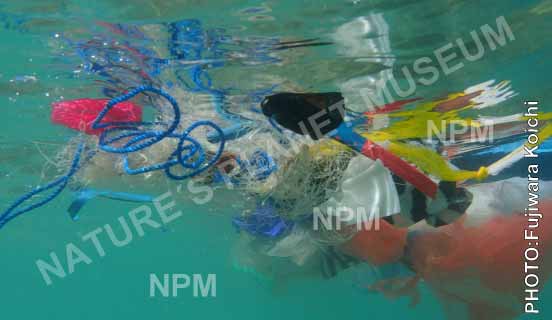 |
Every year more than 8 million tons of plastic are dumped into the ocean
of the world. �@The plastic will never rot in the sea and will not return
to the nature.
���N800���g���ȏ�̃v���X�`�b�N�����E�̊C�Ɏ̂Ă��Ă��܂��B�v���X�`�b�N���C�ŕ��s���āA���R�ɂ��ǂ邱�Ƃ͂Ȃ��̂ł��B
|
|
|
|
Video: Plastic waste is sinking into the bottom of the sea
����
�w�C��ɒ��ރv���X�`�b�N���݁x
|
Please click photo to start video.
������ς�ɂ͎ʐ^���N���b�N
|
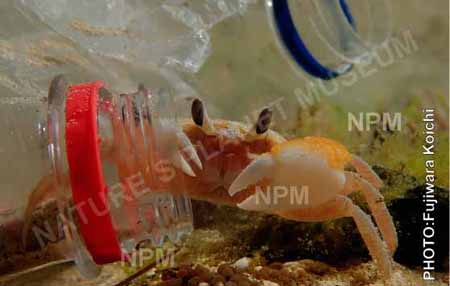 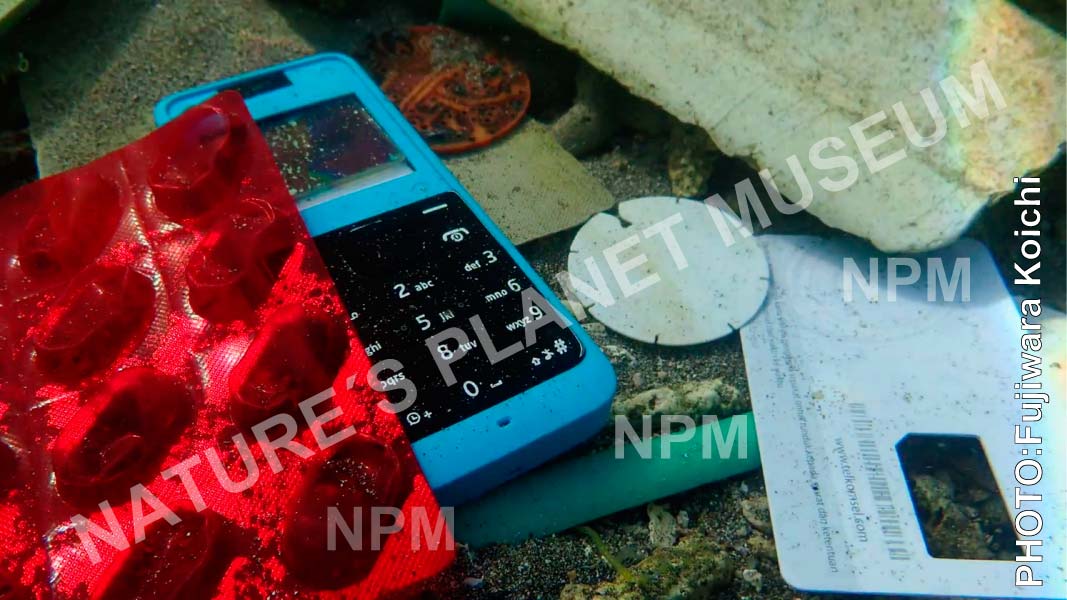 |
|
|
|
|
Video: Plastic destroys coral reefs
����
�w�v���X�`�b�N���T���S�ʂ�j��x
|
Please click photo to start video.
������ς�ɂ͎ʐ^���N���b�N
|
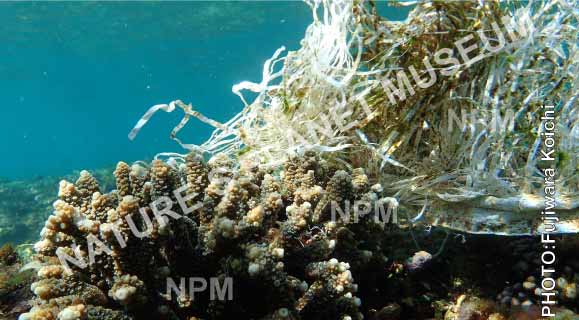 |
Every
year, 8 million tons of plastic waste are dumped in the sea. Coral reefs are no
exception. There is a lot of plastic floating within the coral. Plastic bags
entangled with corals do not melt and stay there for many years. IN addition to
damaging the coral, the sun does not shine through the plastic bag, causing the
coral to become weak, sick and die. When the coral dies, it affects many of the
creatures living within the coral reef. Many creatures lose their habitat and
food and cannot survive.
���N�C�ɂ�800���g�����̃v���X�`�b�N���݂��̂Ă��Ă��܂��B�T���S�ʂ���O�ł͂���܂���B�����ɂ͂�������̃v���X�`�b�N���݂��Y���Ă��܂��B�T���S�ɂ���܂����v���X�`�b�N�܂́A�n���ĂȂ��Ȃ邱�Ƃ͂Ȃ��A���N���Ƃǂ܂葱����̂ł��B�T���S�������邾���ł͂Ȃ��A�v���X�`�b�N�܂̉��͑��z�̌��������炸�A�T���S�����傶��Ɏ���ĕa�C�ɂȂ�����A���肵�Ă��܂��܂��B�T���S������ł��܂��ƁA�T���S�ʂɂ��ސ������̂̑����́A�H�ׂ���̂���S�ȏZ�݂��������āA�����Ă䂭���Ƃ��ł��Ȃ��Ȃ�܂��B |
|
|
|
Video: Ghost net drifting in sea
����
�w�C����Y���䂤�ꂢ�ԁx
|
Please click photo to start video.
������ς�ɂ͎ʐ^���N���b�N
|
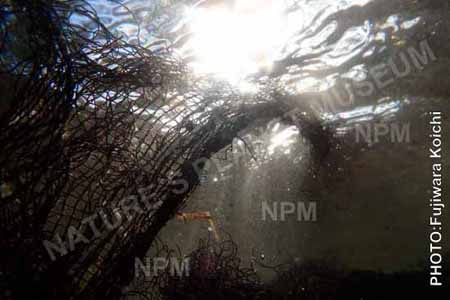 |
Most
fishing nets are made of plastic. Ghost nets are nets drifting in the sea that
fishermen have left behind or lost at sea. Fisherman will throw out old nets
into the sea or cut off a net because it has gotten stuck on a rock in the sea.
These drifting nets are a major threat to marine wildlife. Lots of fur seals,
dolphins, whales, seabirds, sea turtles, fish, etc become tangled and stuck in
these nets. Once, stuck, they cannot move, starve unable to catch food or drown
and die.
���Ŏg���Ԃ͂قƂ�ǂ��v���X�`�b�N���ł��B�C��̊�ȂǂɈ����|����A��Ă��̂܂c���Ă��܂����Ԃ�A�Â��Ȃ�C�Ɏ̂Ă��Ă��܂��ĕY���Ă���Ԃ̎c�������A�u�䂤�ꂢ�ԁv�Ƃ��ł��܂��B�����䂤�ꂢ�������܁A�C�m���������ɑ傫�ȋ��ЂƂȂ��Ă��܂��B��������̃I�b�g�Z�C��C���J�A�N�W���A�C���A�E�~�K���A���Ȃǂ��A�䂤�ꂢ���ɂ���܂��āA�g�������Ƃ�Ȃ��Ȃ�A�Q������M�ꂽ�肵�āA�����ނ����Ă��܂��B |
|
|
|
Video: ONE-WINGED PELICAN
����
�w�З��̃y���J���x
|
Please click photo to start video.
������ς�ɂ͎ʐ^���N���b�N
|
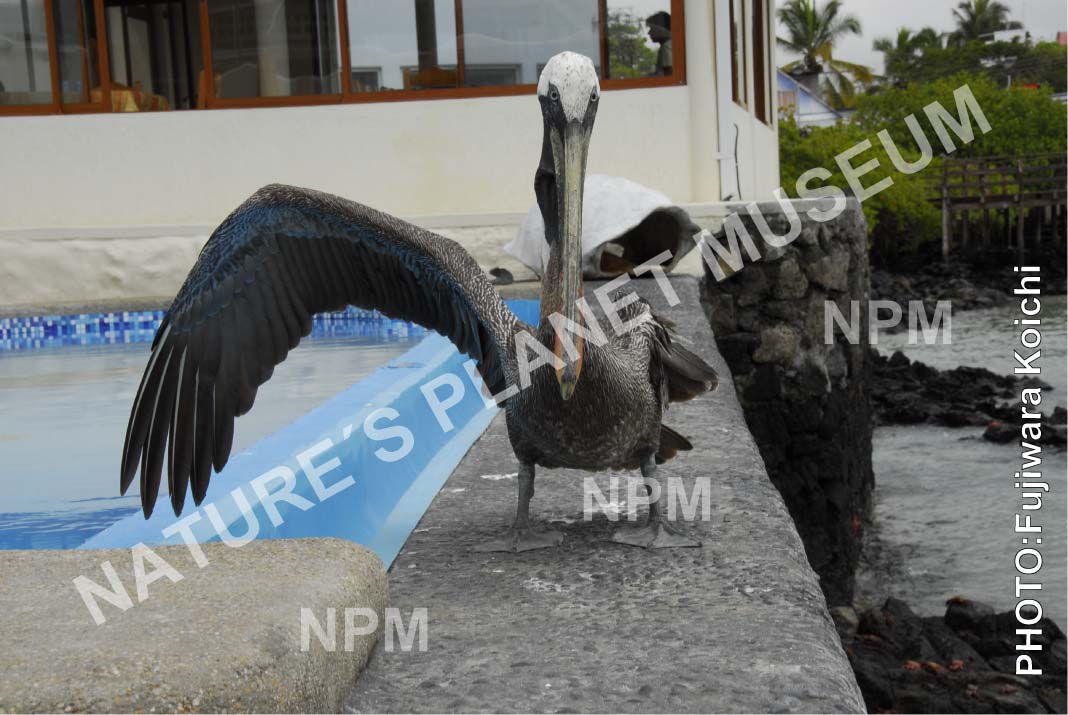 |
A
restaurant next to the sea is home to a Galapagos brown pelican. This pelican
doesn�ft have a left wing. The cause is believed to be getting tangled in nylon
string or a ghost net.
�C�ɗאڂ��Ă��郌�X�g�����ɂ́A��H�̃K���p�S�X�J�b�V���N�y���J�����Z�ݒ����Ă��܂��B���̃y���J���A���̗���������Ă��܂��Ă���̂ł��B�����́A�C�Ɏ̂Ă�ꂽ�e�O�X��H��ԂɈ����|�����Ă��܂����ƍl�����Ă��܂��B |
|
|
|
Video: MANGROVE FOREST AFFECTED BY PLASTIC
����
�w�v���X�`�b�N�ɐN�����}���O���[�u�сx
�i2019,10,24 �V�����f����lj����܂����j
|
Please click photo to start video.
������ς�ɂ͎ʐ^���N���b�N
|
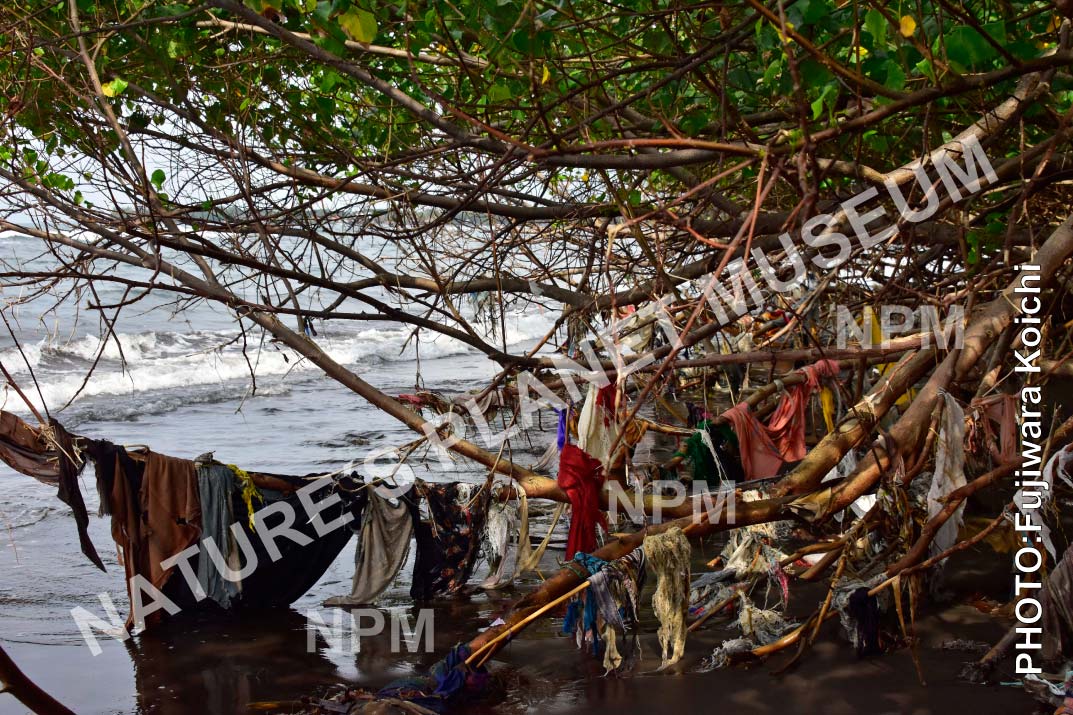 |
From
the tropical to subtropical areas around the world, mangroves live in waters
where seawater and freshwater mix together. At high tide the roots, trunks,
branches and leaves close to the surface of the water become flooded but as the
tide lowers, the soil and mangroves appear. Here in Southeast Asia many plastic
bags and plastic derived fabric was caught all over the mangrove forest like
laundry being hung up. Plastic waste flows from the rives into the sea and get
caught in the mangrove forest. Without decaying, the plastic stays and
increases more and more each year. The plastic entangled on the mangroves
damages the mangroves when pulled by the tide. In addition, they are robbing
the homes of many animals that live in mangroves. In the evening, wild monkeys
came to visit the mangrove forest. It was carrying a plastic bag in its mouth,
maybe mistaking it for food.
���E���̔M�т��爟�M�тɂ����āA�C���ƒW���������荇������ɕ��z����}���O���[�u�B�����̎��́A���⊲�A���ʂɋ߂��}�t���C���ɂ����Ă��܂��܂����A�����Ђ��Ă����ƁA�y��ƃ}���O���[�u���n��Ɍ���܂��B��������A�W�A�̃}���O���[�u�тł́A����������}�ɂ�������̃v���X�`�b�N���̕z��܂��A�܂�Ő��̂悤�ɂЂ��������Ă��܂����B���C���痬������v���X�`�b�N�ł��B�}���O���[�u�тɂ��ǂ���A���邱�Ƃ��Ȃ����N�����̂܂܃v���X�`�b�N�������Â��Ă��܂��B�g�̗͂ł���܂����v���X�`�b�N�������āA�}���O���[�u�������Ă��܂��B����ɁA�}���O���[�u�Ő������邽������̓��������̂��݂���D���Ă���̂ł��B�[���A�}���O���[�u�тɖ쐶�U������������܂����B�H�ו��ƊԈႦ���̂��A�v���X�`�b�N�����ɉ^��ł��܂����B�@�����K�� |
|
|
|
Video: A plastic forest inhabited by Calappa Crab
����
�w�J�j�����炷�v���X�`�b�N�̐X�x
|
Please click photo to start video.
������ς�ɂ͎ʐ^���N���b�N
|
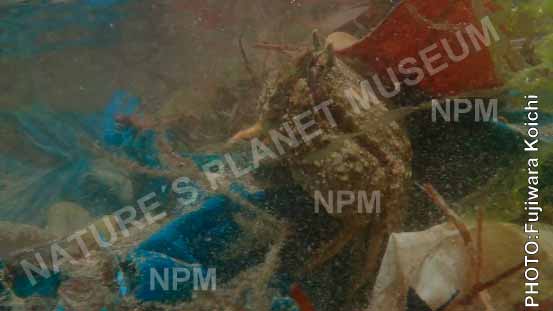 |
|
|
|
|
Video: A fur seal got tangled in a fishing net
����
�w�I�b�g�Z�C�Ƌ��ԁx
|
Please click photo to start video.
������ς�ɂ͎ʐ^���N���b�N
.
|
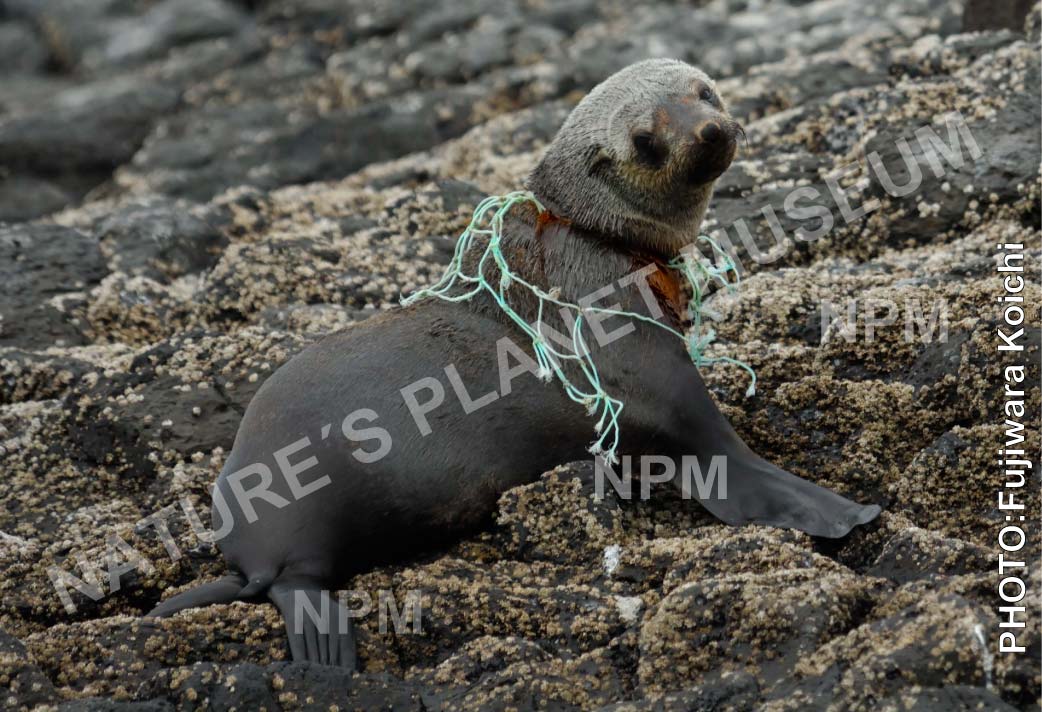 |
The
breeding grounds for sea lion, fur seal and seal are protected worldwide, but
their numbers are declining everywhere. This is because their feeding grounds
overlaps with human fishing grounds. What waits the seals in their feeding
grounds are fishing nets set by humans. Trying to eat fish in a fishing net
gets the seals also stuck in the fishing nets. Seals stuck in fishing nets
can�ft free themselves and drown. These types of accidents are called �gbycatch�h
in the fishing industry. In addition, young seals that become interested in and
start playing with �gghost nets�h can become entangled and drown.
�A�V�J��I�b�g�Z�C�A�A�U���V�̔ɐB�n�͐��E�I�ɕی삳��Ă��܂����A�ǂ����������������Ă��Ă��܂��B�ނ�̃G�T�ł��鋛���Ƃ�ꏊ���A�l�Ԃ̋���Əd�Ȃ��Ă��邩��ł��B�G�T��T���ĊC�����I�b�g�Z�C��҂���̂́A�l�Ԃ��d�|�������Ԃł��B���Ԃɂ��܂�������H�ׂ悤�Ƃ��āA�I�b�g�Z�C�����Ԃɗ��܂��Ă��܂��̂ł��B�����Ȃ�ƁA�Ԃ��甲����ꂸ�A�M�����Ă��܂��I�b�g�Z�C�����Ƃ�₽�Ȃ��̂ł��B�������������̂����Ƃł́u���l�v�Ƃ��ł��܂��B�܂��A�Ⴂ�I�b�g�Z�C�����͊C�Ɏ̂Ă�ꂽ�u�䂤�ꂢ�ԁv�ɋ���������A�Ԃ̂܂���V��ł��邤���ɁA���܂��ēM�����邱�Ƃ��N���Ă��܂��B |
|
|
|
Video: A MARINE IGUANA SWALLOWING A PLASTIC FISHING LINE
����
�w�v���X�`�b�N���̒ގ������݂��E�~�C�O�A�i�x
|
Please click photo to start video.
������ς�ɂ͎ʐ^���N���b�N
|
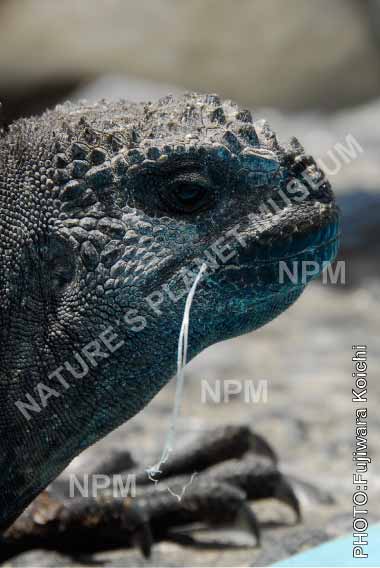 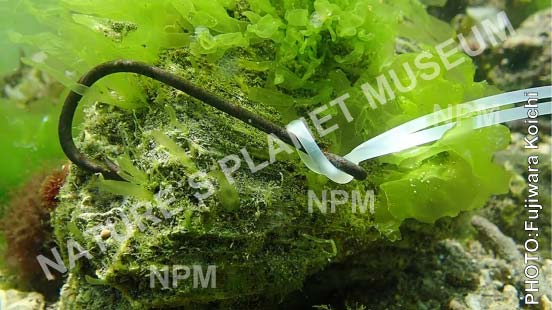 |
The
main food of a marine iguana is seaweed. In particular, sea lettuce is a marine
iguana�fs favourite. When people are fishing at sea, fishing hooks may get stuck
on something in the sea. When that happens the fishing line will be cut and
thrown into the sea. Fishing hooks and lines left behind in the sea can wrap
around marine wildlife. A fishing hook stuck on a rock where sea lettuce, the
iguana�fs favourite is growing. A plastic fishing line was hanging from the
mouth of a marine iguana returning to land. The iguana had accidentally eaten
fishing hooks and lines left behind on the sea floor along with its seaweed for
dinner.
�E�~�C�O�A�i�̎�ȐH�ׂ��̂͊C���ł��B�Ƃ��ɃA�I�T����D���B�C�Œނ������l�Ԃ́A�����Œނ�j�������ɂЂ�������A���Ȃ��Ȃ邱�Ƃ�����܂��B�����Ȃ�Βނ莅����āA�ނ�j�ƈꏏ�ɐ����ɂ��̂܂̂ĂĂ��܂��Ă���̂��B�C���ɒu������ɂ��ꂽ�ނ�j�ƒނ莅���A�C��̐������̂����Ɋ����t���Ă��܂����B�E�~�C�O�A�i�̑�D���ł���A�I�T����������ɁA�ނ莅���Ђ��������Ă��܂����B���ɖ߂����E�~�C�O�A�i�̌�����A�v���X�`�b�N���̒ނ莅�����ꉺ�����Ă��܂����B�C��ɒu������ɂȂ����ނ�j��v���X�`�b�N���̒ނ莅���A�G�T�ł���C���ƈꏏ�ɐH�ׂĂ��܂����肵�Ă���̂ł��B |
|
|
|
|
Video: ENVIRONMENTAL POLLUTION FROM TIRES
����
�w�^�C���ɂ��������x
|
Please click photo to start video.
������ς�ɂ͎ʐ^���N���b�N
|
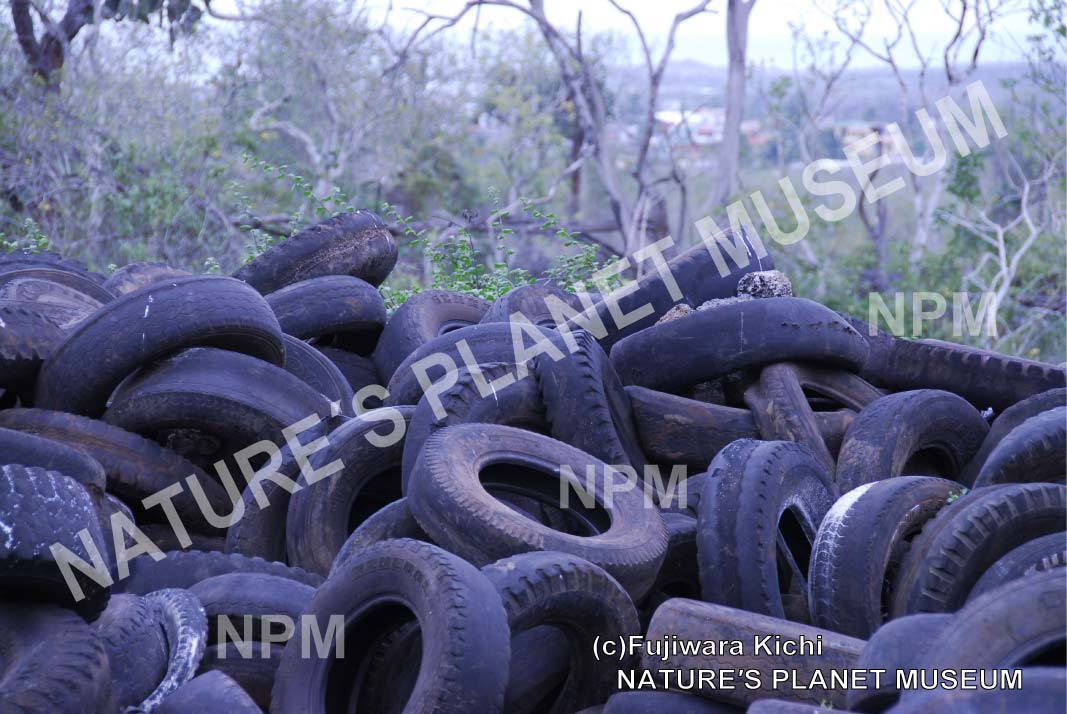 |
An old
tire launched onto shore. Tires are made of synthetic rubber made from
petroleum. The tires that have been launched onto shore have degraded and are
starting to crumble. At first glance it might look harmless with sea lions
taking a nap within the tyres, but there is invisible environmental pollution
produced by tyres. Old tyres were used to make artificial reefs for marine
wildlife but in 2018 French news reported that toxic substances were flowing
from old tyres and polluting the sea. There were fish swimming around the
tyres, but none that lived within the tyres. There are still many tyre based
artificial reefs all around the world.
�C�݂ɑł��グ��ꂽ�Ã^�C���B�^�C���͐Ζ��������鍇���S���łł��Ă��܂��B�ł��グ��ꂽ�^�C���̓S�������Ă��āA�ׂ�������n�߂Ă��܂��B�ł��グ��ꂽ�^�C�����g���āA�A�V�J�����������Q������ȂǁA�ꌩ���a�Ȍ��i�������܂����A���͂��̃^�C������A�ڂɌ����Ȃ����������i��ł���̂ł��B���݂ɂȂ����Ã^�C�����g���āA�C�m�����̐��݂��ƂȂ�l�H��ʂ�������̂ł����A2018�N�A�t�����X�̃j���[�X�ŁA�Ã^�C������L�ŕ���������o���A�C���������Ă��邱�Ƃ����������ƕ���܂����B�^�C���̎�����j���������܂������A�{���Ƀ^�C���Ɋ��ꂽ��͂��Ȃ��Ƃ̂��ƁB���̃^�C���̂܂��ɂ��A��������Ă��邱�Ƃ͂���܂���ł����B�^�C�����g�����l�H�ʂ́A���E���ɂ܂��܂���������܂��B |
|
|
Video: Wild monkeys eating plastic trash
����
�w�v���X�`�b�N���݂�H�ׂ�쐶�U���x
|
Please click photo to start video.
������ς�ɂ͎ʐ^���N���b�N
|

|
|
|
|
Video: Plastic waste from the river home of the monkeys to the sea
����
�w�v���X�`�b�N���݂��T������炷�삩��C�ցx
|
Please click photo to start video.
������ς�ɂ͎ʐ^���N���b�N
|
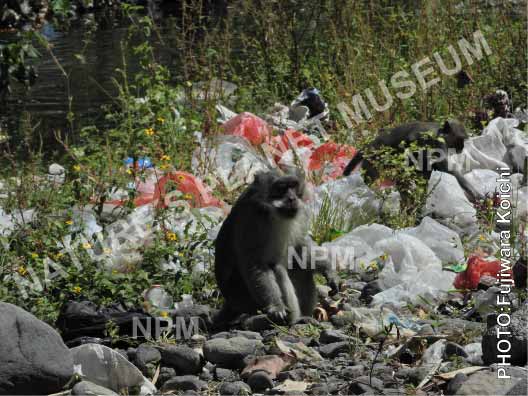
|
|
|
|
|
Video: A mountain of plastic waste created one after another
����
�w���X�ƍ���Ă����v���X�`�b�N���݂̎R�x
|
Please click photo to start video.
������ς�ɂ͎ʐ^���N���b�N
|
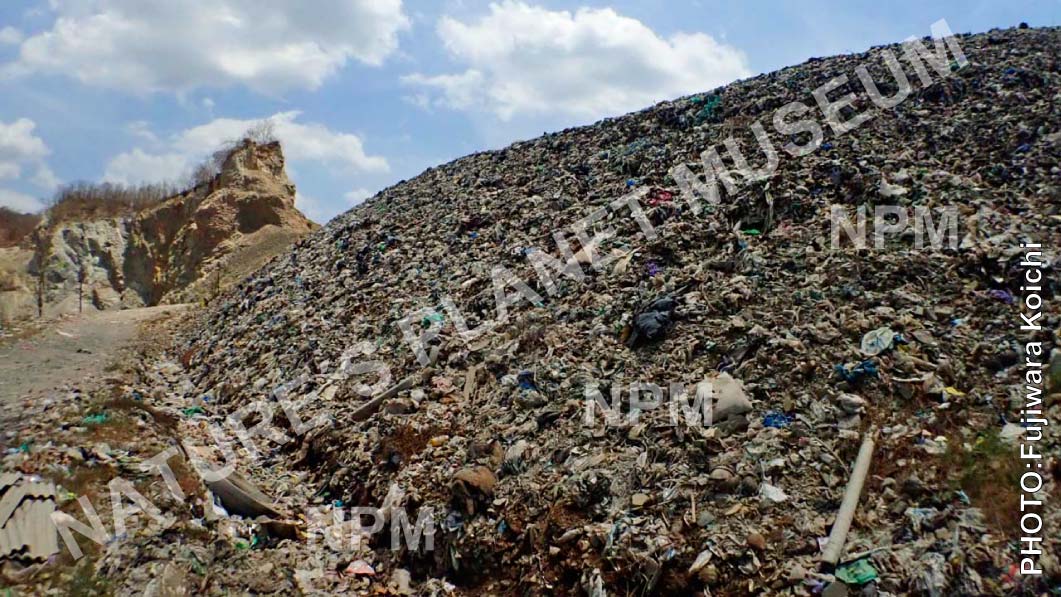
|
|
|
|
Video: Wild elephants eat plastic garbage illegally dumped by people
����
�w�l�Ԃ��̂Ă��v���X�`�b�N���݂�H�ׂ�]�E�x
|
Please click photo to start video.
������ς�ɂ͎ʐ^���N���b�N
|
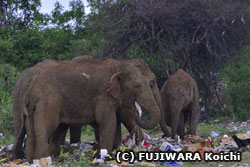 |
The place where the elephants arrived is a garbage dump. Lured in by the
smell of rotten food, the elephant eats a plastic bag containing artificial
sweeteners, food colouring, preservatives, broken glass and metal, and
filthy diapers�c
�n�����g���̉e���Ŋ��������A�X���₹�A�]�E���������炷���������̐A���́A�قƂ�ǃ]�E�ɐH�ׂ�����Ă��܂��܂����B�����������]�E�͂��ɍ��������̍���z���āA�l�Ԃ����炷�ꏊ�ւ���Ă��܂����B���̒n��̐X�ɂ͂܂��A�����c���Ă��܂��B����ɁA�]�E�͐l�ԂɂƂ��Đ_���Ȑ������̂Ƃ��Ă����߂��A���[�łł������]�E�ɁA�l�Ԃ͂��َq��ʕ������������Ƃ��āA�������Ă����܂��B�l�Ԃ̐H�ו��̓����ɂ������āA�]�E���������ǂ蒅�����Ƃ���́A�l�Ԃ��X���J���đ��������ݎ̂ď�B�l�Ԃ̐H�ו��̖����o���Ă��܂����]�E�́A�l�H�̊Â�����A�����������ȐF�Ɍ����邽�߂̐F�f�A����Ȃ��悤�ɂ����i�Ȃǂ��g�����H�ו���H�ׂĂ��܂��܂��B����ɁA���ꂽ�K���X�₷��ǂ��i�C�t�A�j���A�l�Ԃ̕a�C�₯�����������A�Ԃ�����a�l�̂��₨���������t�������ނȂǂ��������v���X�`�b�N�܂��A�܂邲�Ƃ�H�ׂĂ��܂��Ă���̂ł��B |
|
|
| Hungry Elephant's Poo
photo and text by Fujiwara
Koichi
�w�͂���]�E�̂����x
�ʐ^�ƕ��F�����K��
ISBN978-4-03-332780-8
publisher: KAISEISHA PUBLISHING Co.,LTD.
������� ��
|
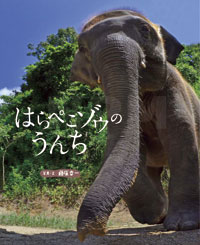 |
|
We have updated the introduction section of the book
�{�̏Љ�y�[�W�A�X�V���܂���
|
|
Photo Gallery�@�ʐ^�M�������[
http://www.natures-planet.com/shop/book/zounounchi.html |
|
|
|
Video: WILD EURASIAN COOT MAKING A NEST WITH STRAWS
-RISE OF PLANTIC HAS CHANGED THE LIFE OF WILD ANIMALS�@-
����
�w�X�g���[�ő���肷��쒹�̃I�I�o���x
�\�v���X�`�b�N�̏o���ɂ���Đ�������ς��Ă��܂����쐶�@�\
|
Please click photo to start video.
������ς�ɂ͎ʐ^���N���b�N
|
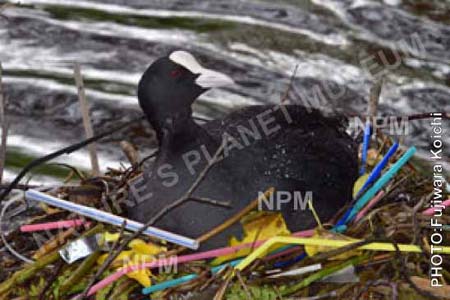 |
Wild
coot breeding on canals and rivers in Europe. The materials used for the nest
are lotus and floating plants that grow in the river. The parent bird feeds
plant food to the chicks every day. However, recently the only thing the parent
birds find in the riverbed is plastic. They should mainly collect plant stems
as nest materials, but straws are now replacing plants. They also give the
chicks shards of plastic mistaken for food.
���[���b�p�̉^�͂��ŔɐB����쒹�I�I�o���B���̍ޗ��Ɏg���Ă���̂́A��ɐ��炵�Ă���@�╂���Ȃǂ̐A���ł��B�e���͐A���̔j�Ђ��A�����������ƃG�T�Ƃ��ăq�i�����Ɍ������ŐH�ׂ����Ă��܂��B�������ŋ߂́A�e�������ɐ����Č����Ă�����̂́A�v���X�`�b�N����B���̍ޗ��Ƃ��āA�A���̌s����ɏW�߂Ă���͂����A���ł̓X�g���[���A���̂����ɂȂ��Ă��܂��Ă��܂��B�܂��A�v���X�`�b�N�̔j�Ђ�H�ו��ƊԈႦ�āA�q�i�ɗ^���Ă���̂ł��B�@�����K�� |
|
|
|
Video: A male of Satin Bowerbird collects only blue plastic to make a specialized
stick structures, called bowers which attract females.
-RISE OF PLANTIC HAS CHANGED THE LIFE OF WILD ANIMALS�A-
����
�w�v���X�`�b�N�Ƃ��炷�A�I�A�Y�}���h���x
�\�v���X�`�b�N�̏o���ɂ���Đ�������ς��Ă��܂����쐶�A�\
|
Please click photo to start video.
������ς�ɂ͎ʐ^���N���b�N
|
 |
|
|
|
|
Video: Endemic wild birds gather at a plastic waste dump site on an Island
-RISE OF PLANTIC HAS CHANGED THE LIFE OF WILD ANIMALS�B-
����
�w���ŗL�̖쒹�������W��
�v���X�`�b�N���ݎ̂ď�x
�\�v���X�`�b�N�̏o���ɂ���Đ�������ς��Ă��܂����쐶�B�\
|
Please click photo to start video.
������ς�ɂ͎ʐ^���N���b�N
|
 |
|
|
|
Video: Plastic trash littering beside the road 1
����
�w���[�Ƀ|�C�̂Ă����v���X�`�b�N����1�x
|
Please click photo to start video.
������ς�ɂ͎ʐ^���N���b�N
|
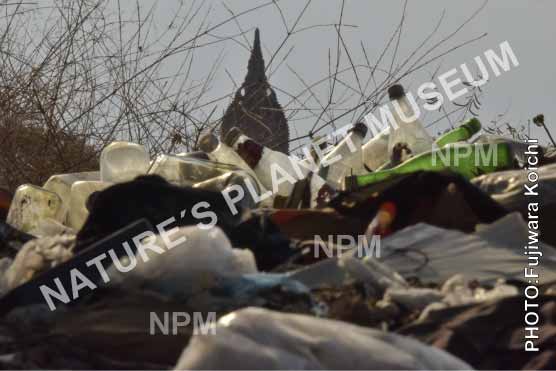 |
Since it is no longer possible to export plastic waste to China 2 years
ago. Plastic trash disposal cannot catch up in Japan now. The video here
may suggest the near future of Japan.
���{�̃v���X�`�b�N���݂�2�N�O�ɒ����ɗA�o���ł��Ȃ��Ȃ��Ă��܂��܂����B����ȍ~���{�����ł��ݏ������ǂ��t���Ȃ��Ȃ�A�s����������Ă��܂��B�����ł̉f���́A���{�̋ߖ������Î����Ă���̂�������܂���B |
|
|
|
Video: Plastic trash littering beside the road 2
����
�w���[�Ƀ|�C�̂Ă����v���X�`�b�N����2�x
|
Please click photo to start video.
������ς�ɂ͎ʐ^���N���b�N
|
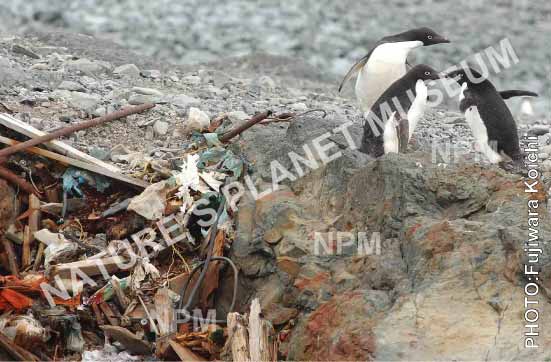 |
Since it is no longer possible to export plastic waste to China 2 years
ago. Plastic trash disposal cannot catch up in Japan now. The video here
may suggest the near future of Japan.
���{�̃v���X�`�b�N���݂�2�N�O�ɒ����ɗA�o���ł��Ȃ��Ȃ��Ă��܂��܂����B����ȍ~���{�����ł��ݏ������ǂ��t���Ȃ��Ȃ�A�s����������Ă��܂��B�����ł̉f���́A���{�̋ߖ������Î����Ă���̂�������܂���B |
|
|
|
Video: PLASTIC BANANA PLANTATION
����
�w�v���X�`�b�N �o�i�i�E�v�����e�[�V�����x
|
Please click photo to start video.
������ς�ɂ͎ʐ^���N���b�N
|
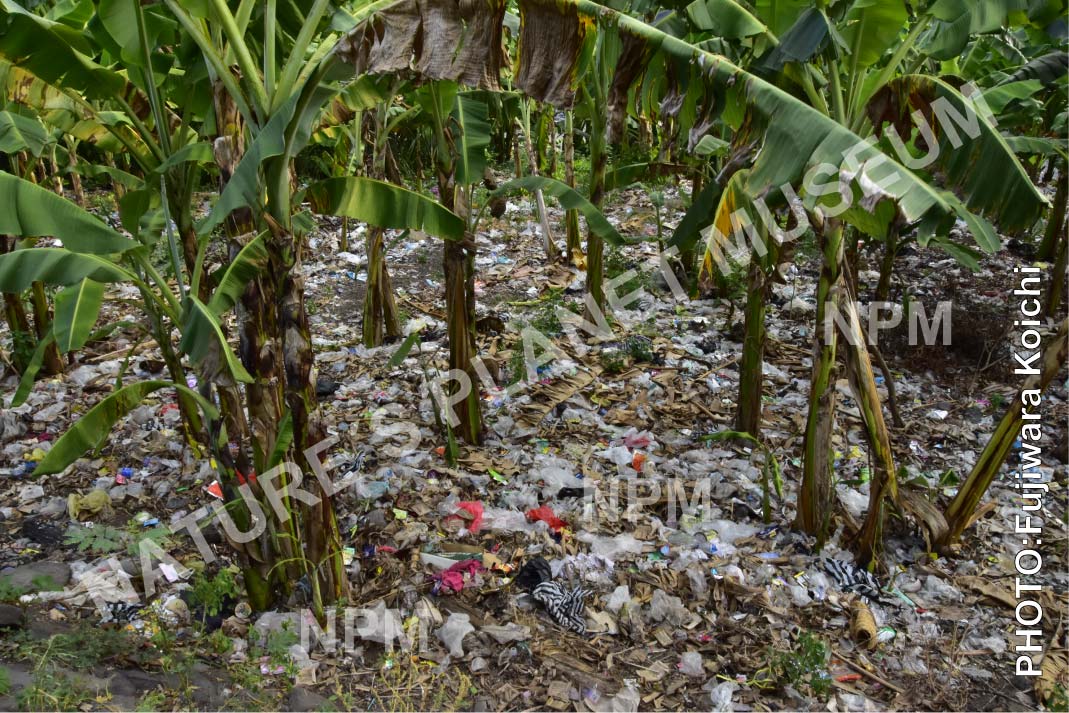 |
Banana
plantation in Southeast Asia. On the ground is illegally discarded plastic
garbage scattered all over. Plastics contain poisonous chemicals that can lead
to soil contamination. Bananas made on this plantation are also sold in the
market.
����A�W�A�ɂ���o�i�i�E�v�����e�[�V�����B �n�ʂɂ́A��@�Ɏ̂Ă�ꂽ�v���X�`�b�N���݂��U�����Ă��܂����B�v���X�`�b�N�ɂ͓łƂȂ鉻�w�������ӂ��܂�Ă��邽�߁A�y�뉘�����i��ł��܂��܂��B���̃v�����e�[�V�����ɍ��ꂽ�o�i�i���A�s��Ŕ����Ă���̂ł��B |
|
|
Video: DEER DIES EATING PLANTIC BAGS
����
�w�������W�܂�H�ׂĎ���ł��܂��x
|
Please click photo to start video.
������ς�ɂ͎ʐ^���N���b�N
|
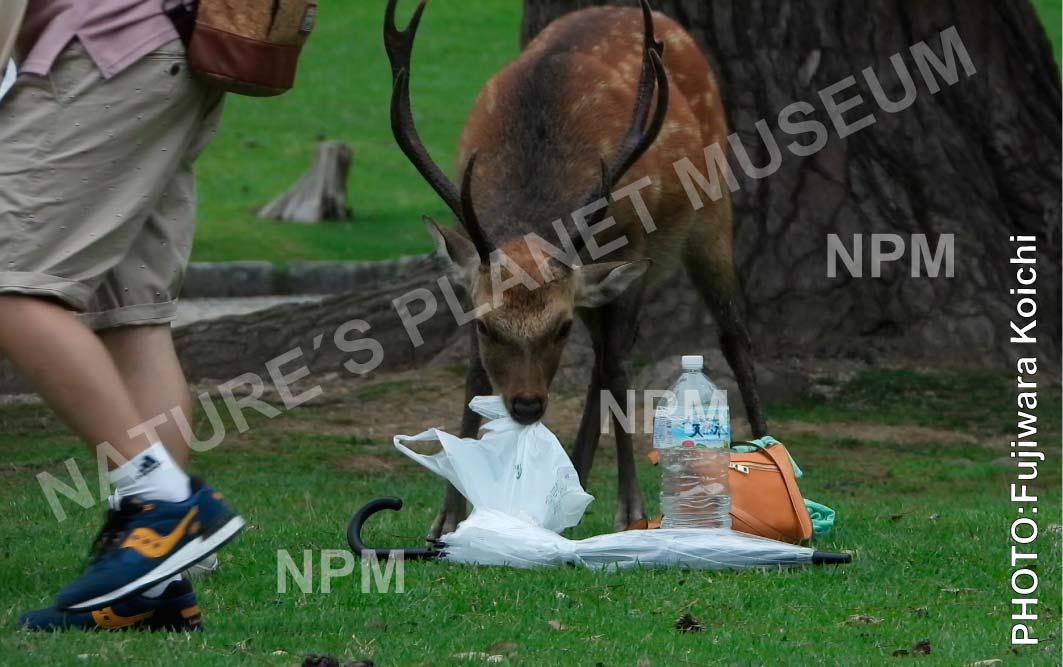 |
Many
tourists come to Nara Park. Deer approaching a tourist with a plastic bag.
Lured by the smell from the plastic bag it eats the bag. Such accidents are
increasing. 4.3kg of plastic lumps were found in on deer�fs stomach.
�����̊ό��q���ޗnj�������Ă��܂��B�ό��q�̃��W�܂ɋ߂Â��Ă����V�J�B�����ɗU��ꃌ�W�܂����̒��ɁB�������������̂������Ă��܂��B�V�J�̂�������4.3kg���̃v���X�`�b�N�̉E�E�E |
|
|
|
�w�v���X�`�b�N�E�X�[�v�̒n���x
���F�~�q���E���X�J���E�A�r���O�@�@�Ė�F�����K��
2019�N11���o��
ISBN978-4-591-16375-7
publisher: POPLAR PUBLISHING Co.,LTD.
������� �|�v����
|

book size�@21.5cm�~28.5cm�@136pages |
Published on Nov 2019
|
|
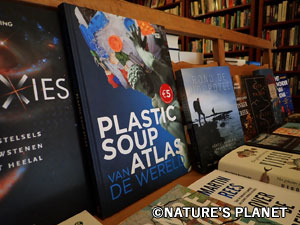
At
a book shop in Amsterdam, Netherlands
�I�����_�A�A���X�e���_���̏��X�ɂ�
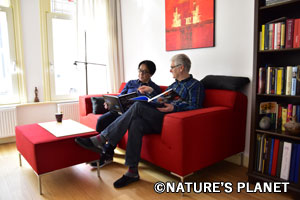
Dr. Michiel Rascal Abbing, the author of �ePlastic Soup of Atlas the World�f
and Fujiwara Koichi.
��ƃ~�q���E���X�J���E�A�r���O���Ƃ̑Βk
|
|
�sDialogue�t
|
|
April 2019 in Amsterdam, Netherlands. Fujiwara Koichi and Dr. Michiel
Roscam Abbing made discussion about this book. They discussed about the
current circumstances of plastic pollution, European efforts to eliminate
disposable plastic and the passion, and episodes about his book production.
This dialogue is reported at the end of the Japan edition published
on November 2019 in Japan.
|
�s�Βk�t
|
|
2019�N4���A�����K�ꂪ�wPLASTIC SOUP ATLAS -VAN DE WERELD-�x�̒��ҁA�~�q���E���X�J���E�A�r���O���ƁA�I�����_�̃A���X�e���_���őΒk���܂����B���E���̃v���X�`�b�N�����̌����A�g���̂ăv���X�`�b�N�p��Ɍ��������[���b�p�̎��g�݁A���А���ł̃G�s�\�[�h��M�ӂȂǂ��A�M����荇���܂����B
���̖͗l�́A�w�v���X�`�b�N�E�X�[�v�̒n���x11�͂ɂĂ������������܂��B
|
|
|
|
